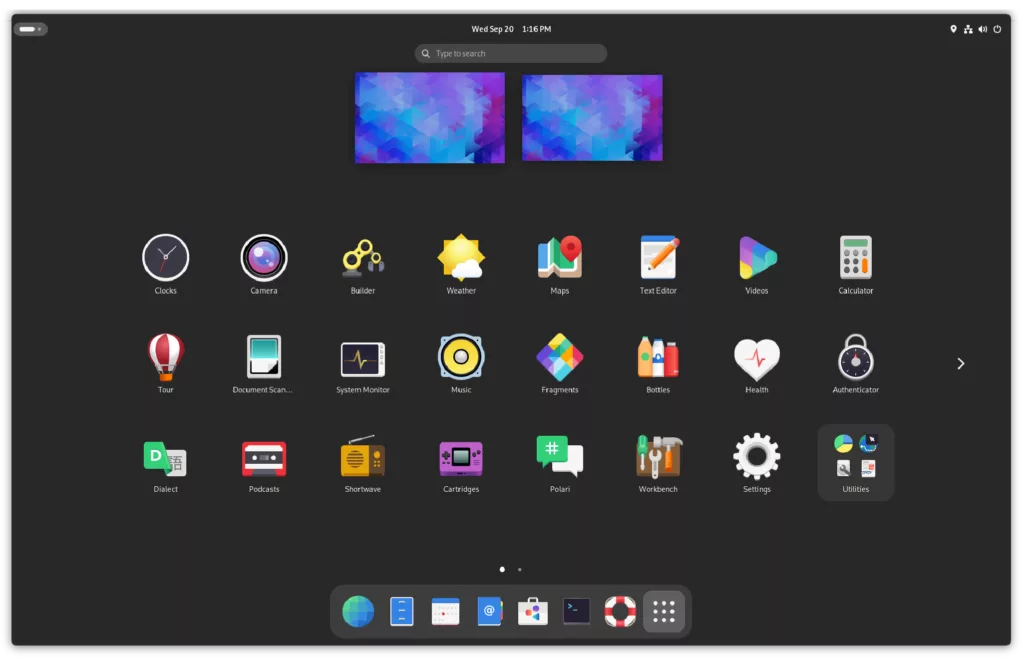The tale of RISC OS starts in the early 1980s, the years when the revolution of the personal computer was already underway. Acorn Computers, a UK company, was at the forefront of this revolution. Acorn, with its groundbreaking designs and leadership in the home computing market, laid the groundwork for the creation of RISC OS, an operating system that would have a lasting impact in the computing world.
The Origins of Acorn Computers
Chris Curry and Hermann Hauser formed Acorn Computers in 1978. The company made an early name for itself with the Acorn Microcomputer followed by the Acorn System 1. However, it was the BBC Microcomputer in 1981 that catapulted Acorn into the limelight. The computer became the centerpiece of UK computer education following the BBC Computer Literacy Project.
So successful, though, that the founders of Acorn realized that the future of computing was with more powerful and more efficient machines. The 8-bit machines were just too limiting, and this spawned the Acorn RISC Machine (ARM) project that would later lead to RISC OS.
The Origins of ARM and RISC OS
The ARM project was started in 1983 by Sophie Wilson and Steve Furber. They aimed to develop a high-performance low-power consuming processor, for which they had to redesign the conventional CPU architecture. They chose to implement a Reduced Instruction Set Computer (RISC) architecture, minimizing the instruction set of the processor to achieve higher efficiency and speed.
ARM prototype machines were already functional by 1985. This was an important step since it opened the door for a new line of computers as well as a new operating system to take full advantage of the ARM architecture. The Acorn Archimedes, launched in 1987, was the world’s first RISC-based home computer, and it came with an operating system called Arthur at that time.
Arthur – A Step Towards RISC OS
Arthur, RISC OS’s predecessor, debuted in 1987 with the Acorn Archimedes. While it represented a tremendous advance in GUI and multitasking function over the 8-bit designs, Arthur was chastised for having been released too soon to market. It contained several limitations and bugs that kept it from being taken very seriously.
Both developers and users reacted in the same way: a more sophisticated, more powerful operating system was required to take full advantage of the ARM architecture’s capabilities. The result was the creation of RISC OS, which would overcome Arthur’s limitations and offer an richer, easier-to-use experience.
RISC OS 2 – The True Beginning
Acorn released RISC OS 2 in 1989, the initial version of what was to be a very long-lived operating system. RISC OS 2 was more stable and feature-full than Arthur. It had cooperative multitasking, an improved graphical user interface, and a modular file system.
RISC OS 2 was a hit among Acorn users. People liked its user-friendly interface and its powerful features that enabled them to accomplish demanding tasks with ease. The operating system was especially lauded for its effective use of resources, which made it a top choice among hobbyists and professionals.
RISC OS 3 – Maturity and Innovation
The launch of RISC OS 3 in 1991 marked a time of maturity and development for the operating system. RISC OS 3 brought with it many improvements, such as improved memory management, better graphics support, and a enhanced windowing system. It also supported a broader range of hardware, thus being more adaptable and versatile.
One of the most obvious aspects of RISC OS 3 was that it was modular in design, and this meant that users could customize and expand the operating system to meet their own requirements. This level of flexibility was a real bonus, particularly in professional and educational environments where particular software demands were the norm.
It was then that Acorn released the RiscPC, a modular, upgradable computer, which demonstrated the true potential of the ARM architecture and RISC OS. The RiscPC could be run with several operating systems on a range of CPU cards, including RISC OS and Windows. This positioned it in a very unique position in the hearts of those users who required the best of all.
The Challenges of the Late 1990s
In spite of RISC OS’s and Acorn’s innovative hardware technical excellence, the company suffered extreme hardships in the later part of the 1990s. Due to the general availability of IBM-compatible PCs featuring MS-DOS and Windows, along with the increasing popularity of Apple’s Macintosh, it became impossible for Acorn to compete globally.
Financial troubles and internal restructuring exacerbated Acorn’s woes. In 1998, Acorn Computers was wound up effectively, and an era came to a close. But RISC OS’s tale was far from concluded. A new company, RISCOS Ltd, purchased the operating system rights to RISC OS and continued to develop and support RISC OS for the user base that had been retained.
The Era of RISCOS Ltd
RISCOS Ltd acquired the RISC OS development and distribution in 1999. RISC OS 4, their first full release, incorporated major enhancements like a new file system (EFS) and better hardware support. This was the period of heightened community-based effort to ensure the operating system’s viability and competitiveness.
The beginning of the 2000s brought the advent of RISC OS Select, a pay-for-update model that gave users continuous updates and added functionality. RISC OS Select provided features such as improved graphics support, additional networking capability, and overall usability improvements. This solution gave a constant flow of development and interest.
Open-Sourcing and Community Building
RISC OS Open was formed in 2003 with the objective of opening the operating system source code to the public domain. This was a historic moment since it allowed greater community participation and faster development. RISC OS 5 was open-sourced in 2006, a move which gave new life to the platform.
Open sourcing of RISC OS created a lively developer community. Hobbyists and developers from around the globe worked on the operating system, adding new applications, drivers, and improvements. The collaborative effort made RISC OS current and compatible with newer computer hardware.
RISC OS and Raspberry Pi
The arrival of ARM hardware in the 2010s, and specifically the Raspberry Pi, gave RISC OS a new lease on life. The operating system’s small size and parsimonious footprint made it the ideal choice for these newer platforms. In 2012, RISC OS was officially released on the Raspberry Pi, introducing the operating system to a whole new generation and demonstrating its place in the era of inexpensive small computing.
The port of RISC OS to the Raspberry Pi was a seminal moment. It gave the operating system a new lease on life and introduced it to a new generation of users and programmers. The RISC OS community embraced this development, and there were plenty of resources, tutorials, and software dedicated to the Raspberry Pi.
The Modern Age and Timeless Legacy
As the 2010s continued, RISC OS was still finding its niche in an evolving world. The flexibility of the operating system and the tenacity of the community meant that it was still an active and viable platform. Continued development and support from RISC OS Open and others meant that the operating system was keeping up with contemporary hardware and software standards.
RISC OS is now held in esteem for its historical significance and the alternative paradigm it represents to computing. It is a reminder of the creativity and innovation that existed during the first decade of home computing. For many, RISC OS is a nostalgic part of their computer experience, a testament to the power of simplicity and efficiency of design.
Personal Experiences and Reflections
The history of RISC OS is not merely a story of technological progress; it is also a tale of personal histories and memories of computer users. RISC OS was more than just a tool for most of its users; it was a gateway to creativity, knowledge, and community.
Consider James, for instance, who was introduced to RISC OS as a teenager when he got an Acorn Archimedes 305. RISC OS’s user-friendly interface and advanced level of functionality sparked his interest in programming and technology. He spent countless hours mastering the system, developing software, and interacting with fellow enthusiasts via user groups and online forums.
James’s use of RISC OS persisted through college and into the professional world. The elegance and purity of the operating system continued to be an inspiration, a reminder of computing’s halcyon days when creativity and passion propelled the field ahead. Although newer technology was what James worked with, James never had a RISC OS machine far out of sight, a reflection of its lasting impact.
Educational Influence and Legacy
One of the most profound influences of RISC OS was in education. The operating system, together with Acorn hardware, revolutionized the way computers were taught in the UK and elsewhere. RISC OS computers were employed in universities and schools, where they gave students access to interactive and educational tools.
The simplicity of the interface and educational programs on RISC OS computers made them a perfect choice for learning programming, maths, and other disciplines. Several of those students who were taught on RISC OS computers went on to be technology leaders, taking the ideas and principles they learned with them into their working lives.
RISC OS’s educational legacy can be seen in the ongoing usage of the operating system in schools and educational projects. The Raspberry Pi, which put RISC OS in the hands of a new generation of students, remains a well-liked platform for the teaching of computer science and electronics. R
ISC OS in schools is a testament to its effectiveness and design as a learning tool.
The RISC OS Community
The RISC OS community has always been a vital part of the operating system’s heritage. Community, ranging from early Acorn User Groups through to present-day online forums and social media, have helped keep RISC OS alive and evolving.
User support, cooperation, and community-driven development have been the trademarks of the RISC OS experience. Developers and enthusiasts around the globe have contributed to the growth of the operating system, creating a bountiful ecosystem of software, hardware, and resources.
Shows such as the Wakefield RISC OS Show and the London Show have allowed users and developers to get together, show off their projects, and celebrate the operating system. These events have enabled a sense of community and continuity to be preserved, and RISC OS continues to be an active and alive platform.
Reflections on RISC OS Innovations
Looking back at the history of RISC OS, it’s not difficult to see that its history is a tale of innovation and tenacity. The OS brought with it several revolutionary features that had an impact on the wider computing world. Its resource efficiency, user-friendly graphical interface, and modular nature distinguished it from its contemporaries.
One of the most significant of these innovations was the cooperative multitasking strategy that enabled multiple programs to be executed together without a reduction in performance. This was innovative and delivered a responsive and smooth user experience.
The RISC OS Filer, as a hierarchical file management system, brought a level of order and control that no other operating system was able to. RISC OS’s flexibility and customizability made it possible for users to make their computing experience how they wanted it.
The Future of RISC OS
Looking into the future, RISC OS’s tale is still being told. The flexibility of the operating system and the loyalty of its following mean that it will persist as a living and inspirational platform. Be it through new hardware implementations, educational applications, or ongoing development, RISC OS stands as a testament to what is possible when passion and determination are combined.
The continued development work by RISC OS Open and others is important in keeping the operating system current despite the fast-evolving technology. Support for modern hardware, adherence to modern software standards, and additional features are necessary to win new users as well as maintain current users.
To new users and developers, RISC OS provides a window into the past of computing and a demonstration of the ingenuity that fuels technological advancement. The operating system’s elegance, efficiency, and simplicity continue to instruct and inspire, and its heritage lives on.
A Lasting Impact
RISC OS’s history is a tale of innovation, community, and tenacity. From its beginnings at Acorn Computers through its endurance amidst corporate turmoil and the adoption of open-source development, RISC OS has made a mark on computing that can never be erased. To those who experienced it, RISC OS is not just an operating system; it is a treasured part of their existence as they journeyed together with the ever-evolving world of technology.
Its history attests that despite a world dominated by giants, there will always be room for something unique and extraordinary. As we mark the history of RISC OS, we pay tribute to the visionaries, the authors, and the users who made it a success. Their drive, their creativity, and their resolve took RISC OS through, surviving and flourishing, and creating a legacy that will teach and inspire for generations to come. The tale of RISC OS is far from concluded.
It stands as a living testament to the innovative spirit, a guiding light for those who would have the courage to dream, and a reminder that the highway of technology is always a journey of discovery, exploration, and limitless possibility.




